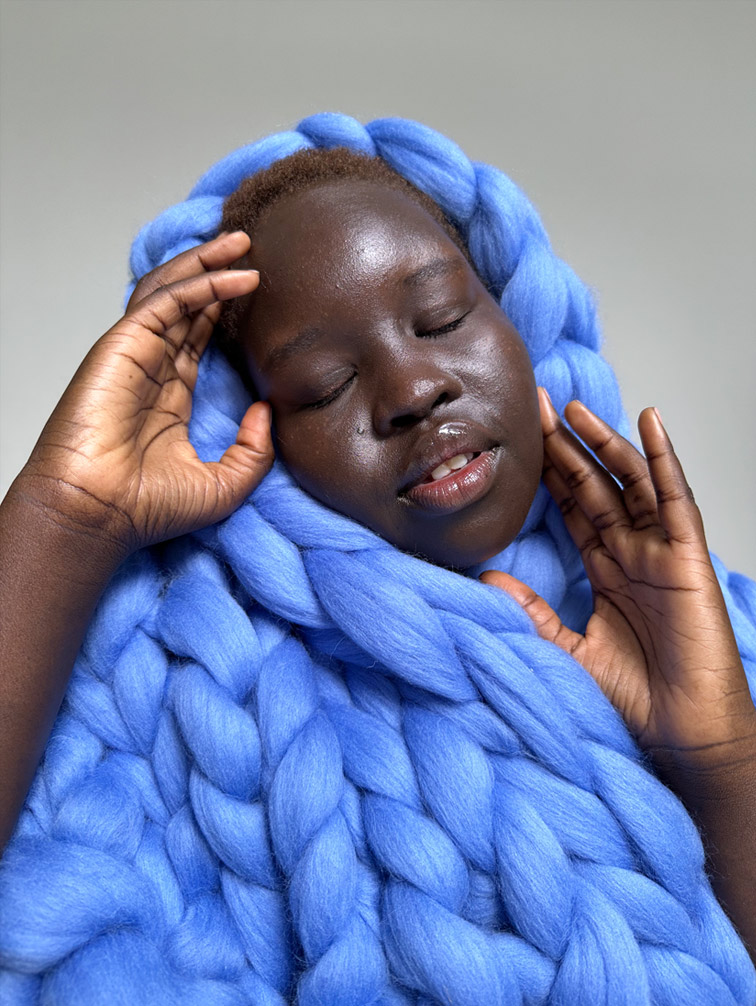And then there was Pro.
Apple iPhone 11 Pro Max with a transformative triple‑camera system that adds tons of capability without complexity. An unprecedented leap in battery life. And a mind‑blowing chip that doubles down on machine learning and pushes the boundaries of what a smartphone can do. Welcome to the first iPhone powerful enough to be called Pro.
Take a closer look.
Two sizes. Four finishes. Stainless steel and glass design.
Pro camera system
We’ve three‑upped ourselves.
Meet the first triple‑camera system to combine cutting‑edge technology with the legendary simplicity of iPhone. Capture up to four times more scene. Get beautiful images in drastically lower light. Shoot the highest‑quality video in a smartphone — then edit with the same tools you love for photos. You’ve never shot with anything like it.
Ultra Wide Camera
- 13 mm focal length
- ƒ/2.4 aperture
- 5-element lens
- 120° field of view
- 4x more scene
- 12MP sensor
Wide Camera
- 26 mm focal length
- ƒ/1.8 aperture
- 6-element lens
- Optical image stabilization
- 100% Focus Pixels
- New 12MP sensor
Telephoto Camera
- 52 mm focal length
- Larger ƒ/2.0 aperture
- 6-element lens
- Optical image stabilization
- 2x optical zoom
- 12MP sensor
Expanded field of view.
Apple iPhone 11 Pro Max lets you zoom from the Telephoto all the way out to the new Ultra Wide camera, for an impressive 4x optical zoom range.
Elegant, immersive interface.
We leveraged the wider field of view to let you see what’s happening outside the image frame — and simply tap to capture it. And there’s almost nothing between you and your subject except a new, Pro camera font. So you’re always fully immersed in the scene.
Three cameras that don’t feel like three cameras.
When Apple set out to design a pro-level camera system, we wanted the three cameras to work together seamlessly as one.
The fundamental challenge: Even though Apple used the same color system across all three sensors, different camera modules vary in terms of color and sensitivity. To allow for that, our engineers precisely calibrate each camera individually for things like white balance and exposure. Then they push it even further, pairing the three cameras and calibrating them again for module to module alignment.
Those calibrations are applied to every image you capture — in real time. It’s like taking raw images from three different cameras and processing them to achieve a consistent look and color. Except it happens in a split second. Getting those details right, on the fly, as you switch from Telephoto to Wide to Ultra Wide, takes the kind of computational power only A13 Bionic provides.
Apple also wanted each of the cameras to be accessible with a single tap, all the time. No matter whether you’re shooting photos, portraits, videos, time lapse, or slo-mo. And Apple were determined to have beautifully smooth transitions from one camera to the next.
All this took intense collaboration between the sensor team, the camera software team, and the chip team. The result is a shooting experience unlike any other.
4K video
Boom, you’re a film editor.
iOS 13 lets you edit videos just like you edit photos. Rotate, crop, auto-enhance, add filters, and more.
Ultra Wide
Take it alllllll in.
When you just can’t squeeze everything into the frame, zoom out. Because the new Ultra Wide camera captures four times more scene than ever. It’s like stepping back — way back — without taking a step. Bring on those mountain ranges, soaring cathedrals, and iconic skylines.
Ultra Wide creates an artful perspective when you’re in close — a pro technique that’s fun to experiment with.
With a wider canvas, you can capture more expansive scenes than ever before.
The 120-degree field of view makes Ultra Wide ideal for landscape photography.
Night mode
High tech meets low light.
From dimly lit restaurants to moonlit beaches, the new Night mode uses intelligent software and A13 Bionic to deliver low‑light shots never before possible on iPhone. And it all happens automatically. You can also experiment with manual controls to dial in even more detail and less noise.
The power behind beautiful night shots.
Getting great shots in low light is one of photography’s perpetual challenges. The shutter needs to stay open longer, which can lead to blur. Then there’s the tricky task of keeping detail in the shadows without overexposing lighter areas. And making sure colors stay natural-looking.
With Apple iPhone 11 and Apple iPhone 11 Pro Max, a new Wide camera sensor works with intelligent software and A13 Bionic to let you do what was never possible on iPhone: get beautiful, detailed images in drastically lower light.
Night mode comes on automatically when needed — say, in a candlelit restaurant. When you tap the shutter, the camera takes multiple images while optical image stabilization steadies the lens.
Then the camera software goes to work. It aligns images to correct for movement and discards the sections with too much blur and fuses sharper ones. also adjusts contrast so everything stays in balance. It fine-tunes colors so they look natural. Then it intelligently de-noises and enhances details to produce the final image.
It all adds up to night shots that stand apart — with more detail, less noise, and an authentic sense of time and place.
Portrait mode
Power to the portrait.
With three cameras working together, you can fit more in your portraits than ever. iOS 13 adds the High‑Key Light Mono effect for studio‑style monochromes. And Portrait Lighting lets you control the intensity of light to flatter your subject — just like you would in a studio. How beautiful is that?
No matter where you get the shot, High‑Key Light Mono can transform it into a striking studio‑style portrait.
Smart HDR
And you thought your photos couldn’t get any better.
Next-generation Smart HDR uses advanced algorithms to finesse highlight and shadow detail in your image. And now it leverages machine learning to recognize faces in your shot and intelligently relight them. That means Apple iPhone 11 Pro Max can automatically fine-tune detail in both the subject and the background. Even some DSLR cameras can’t do that.
Smart HDR brings remarkable lighting and detail to faces while maintaining rich color variation in the background.
Be ready when your photo op turns into a video op.
Say you’re taking photos and you see something you’ve got to catch on video. With QuickTake, there’s no need to switch modes. Just leave your finger on the shutter to start recording. Want to keep the recording going? Swipe right. To take burst photos, swipe left.Super Retina XDR. A sharp contrast from everything else.
The Super Retina XDR display boasts not one but two new peaks of brightness and understands when to use them. It hits up to 800 nits when you’re out in the sun — great for shooting and making selects on the go — and up to 1200 nits when you’re viewing extreme dynamic range content. It’s like having a Pro Display XDR on your iPhone.
Brightness and darkness, taken to extremes.
The new Super Retina XDR display is Apple’s best display ever in an iPhone. Not only is it brighter and smarter, it’s also up to 15 percent more power efficient.
How did we improve performance and efficiency at the same time? Since each pixel emits its own light, the display can turn off individual pixels to produce true blacks. On the flip side, we improved communication between the display driver and the display, used a more efficient OLED material, and optimized the panel design to reach two new record levels of brightness — one in sunlight and one while viewing HDR photos and movies.
So if you’re at home watching a thriller with a fireball exploding against the night sky, the Super Retina XDR display intelligently illuminates the fireball-related pixels up to 1200 nits, while the pixels around it stay deep black. This ability to identify the brightest parts of the display and drive them to a higher peak brightness helps Apple iPhone 11 Pro Max deliver a stunning picture like you’d see on our Pro Display XDR.
And because the display is more efficient, it contributes to longer battery life. Buying you some extra time to enjoy those special features.
Pro performance
A chip so advanced, even we’re trying to catch up.
Apple custom‑built A13 Bionic with a focus on machine learning across the entire chip — enabling experiences that simply aren’t found on any other smartphone. In fact, it’s so fast, so powerful, and so intelligent, it’s years ahead of any other chip. Which gives you an unfair advantage.
Only iPhone
No other phone is like iPhone.
Information about iPhone 11 Pro
- All battery claims depend on network configuration and many other factors; actual results will vary. Battery has limited recharge cycles and may eventually need to be replaced by Apple service provider. Battery life and charge cycles vary by use and settings. See apple.com/batteries and apple.com/iphone/battery.html for more information.
- Testing conducted by Apple in August 2019 using preproduction Apple iPhone 11 Pro and Apple iPhone 11 Pro Max units and software and accessory Apple USB-C Power Adapters (18W Model A1720, 29W Model A1540, 30W Model A1882, 61W Model A1947 and 87W Model A1719). Fast-charge testing conducted with drained iPhone units. Charge time varies with environmental factors; actual results will vary.
- iPhone 11 Pro and 11 Pro Max are splash, water, and dust resistant and were tested under controlled laboratory conditions with a rating of IP68 under IEC standard 60529 (maximum depth of 4 meters up to 30 minutes). Splash, water, and dust resistance are not permanent conditions and resistance might decrease as a result of normal wear. Do not attempt to charge a wet iPhone; refer to the user guide for cleaning and drying instructions. Liquid damage not covered under warranty.
- Available September 30, 2019.
- Available later this fall.
- Qi wireless chargers sold separately.
- Data plan required. Gigabit-class LTE, LTE Advanced, and LTE are available in select markets and through select carriers. Speeds are based on theoretical throughput and vary based on site conditions and carrier. For details on LTE support, contact your carrier and see www.apple.com/iphone/LTE.
- Use of eSIM requires a wireless service plan (which may include restrictions on switching service providers and roaming, even after contract expiration). Not all carriers support eSIM. Use of eSIM in iPhone may be disabled when purchased from some carriers. See your carrier for details. To learn more, visit https://support.apple.com/kb/HT209044.
- * Trade In: Trade‑in values vary. iPhone 11 Pro promotional pricing is after trade‑in of iPhone X in good condition. Additional trade‑in values require purchase of a new iPhone, subject to availability and limits. Must be at least 18. belleStoreInc or its trade-in partners reserve the right to refuse or limit any Trade In transaction for any reason. In‑store trade‑in requires presentation of a valid, government-issued photo ID (local law may require saving this information). Sales tax may be assessed on full value of new iPhone. See apple.com/shop/trade-in for more information.
- Some features may not be available for all countries or all areas. Click here to see complete list




































Excellent write up about the iPhone 11 Pro. The camera and the A13 chip is the difference between the 11 and the iPhone XS! Maybe the 2020 iPhone is worth waiting for.
This is actually a Lovely phone